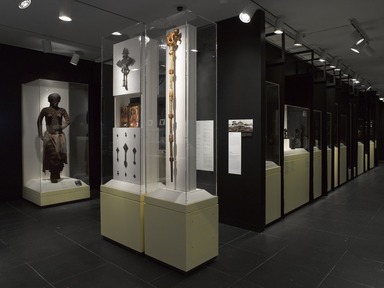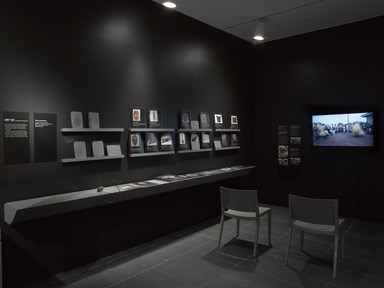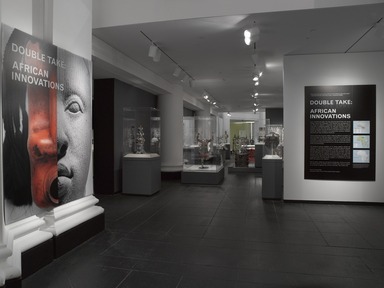

Double Take: African Innovations, October 29, 2014 through March 19, 2017 (Image: DIG_E_2014_Double_Take_African_Innovations_01_PS4.jpg Brooklyn Museum photograph, 2014)

Double Take: African Innovations, October 29, 2014 through March 19, 2017 (Image: DIG_E_2014_Double_Take_African_Innovations_02_PS4.jpg Brooklyn Museum photograph, 2014)
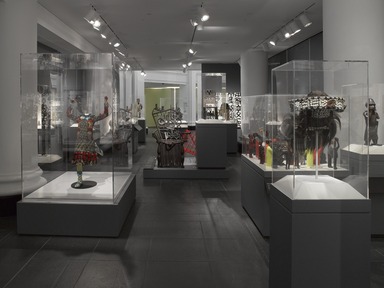
Double Take: African Innovations, October 29, 2014 through March 19, 2017 (Image: DIG_E_2014_Double_Take_African_Innovations_03_PS4.jpg Brooklyn Museum photograph, 2014)
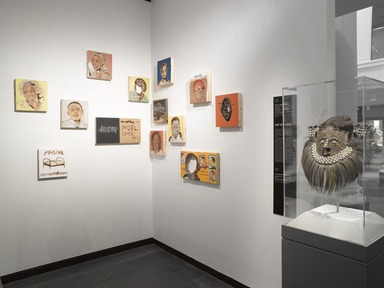
Double Take: African Innovations, October 29, 2014 through March 19, 2017 (Image: DIG_E_2014_Double_Take_African_Innovations_04_PS4.jpg Brooklyn Museum photograph, 2014)

Double Take: African Innovations, October 29, 2014 through March 19, 2017 (Image: DIG_E_2014_Double_Take_African_Innovations_05_PS4.jpg Brooklyn Museum photograph, 2014)
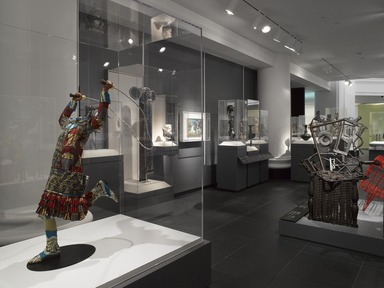
Double Take: African Innovations, October 29, 2014 through March 19, 2017 (Image: DIG_E_2014_Double_Take_African_Innovations_06_PS4.jpg Brooklyn Museum photograph, 2014)

Double Take: African Innovations, October 29, 2014 through March 19, 2017 (Image: DIG_E_2014_Double_Take_African_Innovations_07_PS4.jpg Brooklyn Museum photograph, 2014)
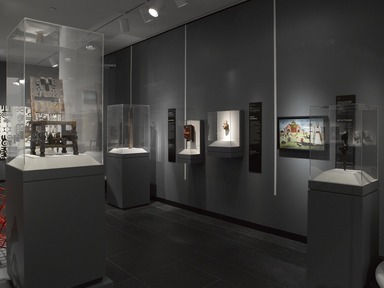
Double Take: African Innovations, October 29, 2014 through March 19, 2017 (Image: DIG_E_2014_Double_Take_African_Innovations_08_PS4.jpg Brooklyn Museum photograph, 2014)
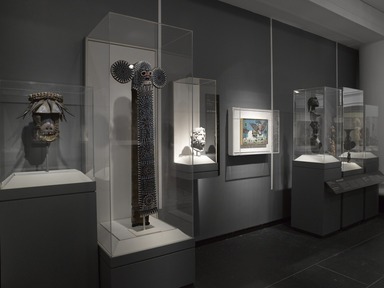
Double Take: African Innovations, October 29, 2014 through March 19, 2017 (Image: DIG_E_2014_Double_Take_African_Innovations_09_PS4.jpg Brooklyn Museum photograph, 2014)
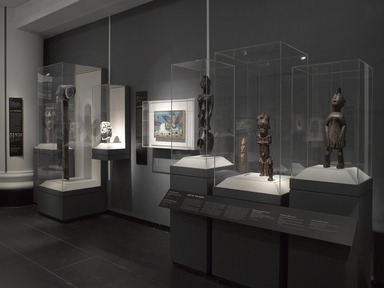
Double Take: African Innovations, October 29, 2014 through March 19, 2017 (Image: DIG_E_2014_Double_Take_African_Innovations_10_PS4.jpg Brooklyn Museum photograph, 2014)
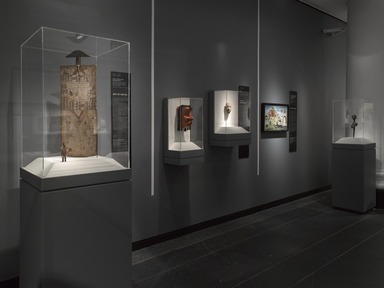
Double Take: African Innovations, October 29, 2014 through March 19, 2017 (Image: DIG_E_2014_Double_Take_African_Innovations_11_PS4.jpg Brooklyn Museum photograph, 2014)
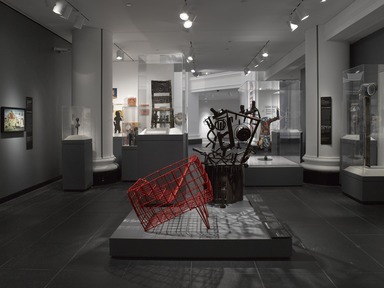
Double Take: African Innovations, October 29, 2014 through March 19, 2017 (Image: DIG_E_2014_Double_Take_African_Innovations_12_PS4.jpg Brooklyn Museum photograph, 2014)
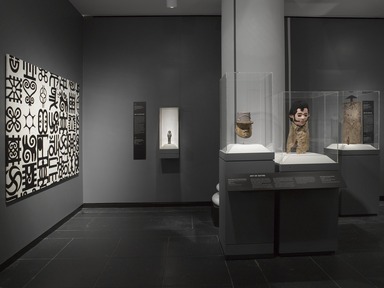
Double Take: African Innovations, October 29, 2014 through March 19, 2017 (Image: DIG_E_2014_Double_Take_African_Innovations_13_PS4.jpg Brooklyn Museum photograph, 2014)
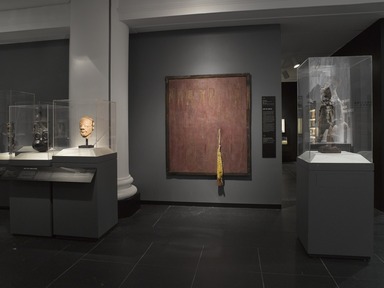
Double Take: African Innovations, October 29, 2014 through March 19, 2017 (Image: DIG_E_2014_Double_Take_African_Innovations_14_PS4.jpg Brooklyn Museum photograph, 2014)
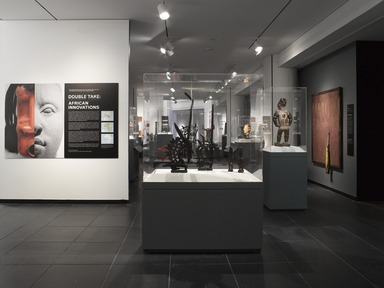
Double Take: African Innovations, October 29, 2014 through March 19, 2017 (Image: DIG_E_2014_Double_Take_African_Innovations_15_PS4.jpg Brooklyn Museum photograph, 2014)

Double Take: African Innovations, October 29, 2014 through March 19, 2017 (Image: DIG_E_2014_Double_Take_African_Innovations_16_PS4.jpg Brooklyn Museum photograph, 2014)

Double Take: African Innovations, October 29, 2014 through March 19, 2017 (Image: DIG_E_2014_Double_Take_African_Innovations_17_PS4.jpg Brooklyn Museum photograph, 2014)
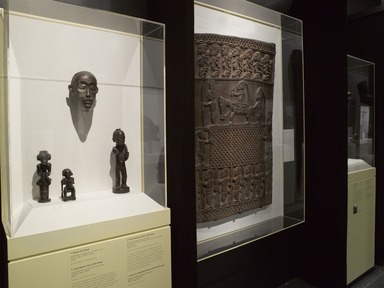
Double Take: African Innovations, October 29, 2014 through March 19, 2017 (Image: DIG_E_2014_Double_Take_African_Innovations_18_PS4.jpg Brooklyn Museum photograph, 2014)
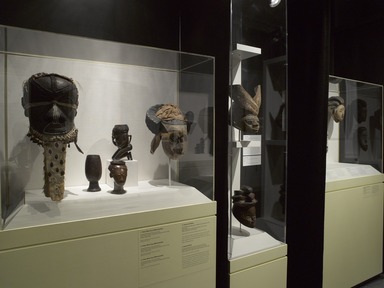
Double Take: African Innovations, October 29, 2014 through March 19, 2017 (Image: DIG_E_2014_Double_Take_African_Innovations_19_PS4.jpg Brooklyn Museum photograph, 2014)

Double Take: African Innovations, October 29, 2014 through March 19, 2017 (Image: DIG_E_2014_Double_Take_African_Innovations_20_PS4.jpg Brooklyn Museum photograph, 2014)
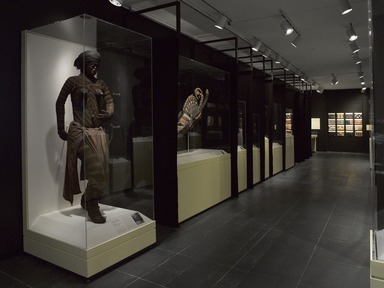
Double Take: African Innovations, October 29, 2014 through March 19, 2017 (Image: DIG_E_2014_Double_Take_African_Innovations_21_PS4.jpg Brooklyn Museum photograph, 2014)
Double Take: African Innovations
-
Double Take: African Innovations
Look—and then look again. You may sense the hand of Eshu, the Yoruba trickster, "god of the crossroads," in the relocation and reconfiguration of our African art collection—a temporary move necessitated by ongoing construction in neighboring galleries. Yet, while Eshu may bring chaos and confusion, he also offers the traveler the possibility of finding a new path forward. In that spirit, amid the disruption of Brooklyn’s African art galleries, Double Take: African Innovations is an experimental, temporary installation that offers new ways of looking at African art.
African artists have long been skilled in balancing different conceptions of time. Even today, an artist may produce a work that is, in one sense, the continuation of a long-standing tradition, made for a ceremonial purpose governed by a cyclical understanding of time. Yet, such a work also remains a personal and contemporary response to an evolving, progressive history of artistic and social change.
The Museum's previous installation of its African galleries situated the collection in a linear, historical chronology; this exhibition takes the opposite approach, pairing or grouping artworks on the basis of themes, solutions, and techniques that recur in African art across time and space. Here you will find illuminating and surprising connections between even seemingly dissimilar works, from very different periods and places. In this gallery, you will also have the opportunity to help us continue investigating this story by suggesting further recurring themes, problems, or connections you would like to see explored in our collection.
With its artistic, intellectual, and spiritual sophistication, African art across the millennia offers an endless series of possible paths between objects. As we rebuild our galleries, join us at the crossroads. Take another look.
Kevin D. Dumouchelle
Associate Curator, Arts of Africa and the Pacific Islands -
Why are the artists "unidentified"?
In African art, as in many fields ranging from the arts of the Americas to European medieval art, we often have no record of the artist's name. The reasons for this are varied and complicated. Most of the cultures represented here relied upon oral histories, which may not have memorialized artists' names. In some cultures, the names of artists were deliberately obscured because the works were considered to have an otherworldly origin. In other cases, although the identity of an artist may have been known locally, the original collector of the work did not record it.
Through a combination of careful historical research and visual analysis, however, it is often possible to ascribe a body of work to an individual hand, if not a known name. Thus, some works here are attributed to specific artists, such as the Master of Ntem. -
Why is this case empty?
This case is currently empty, but we'd like you to help us decide how to fill it with another selection of works from the more than six thousand African objects in our collection. -
ART OF _________
Now that you've seen some unexpected groupings of African artworks, explore the collection and create your own pairing, using images of some of the objects still in storage.
Display your pair on a shelf and use a chalkboard to tell us what theme connects the works. We will be following your ideas closely and will choose one pair every few months to display in the empty case nearby. -
MASQUERADES FROM CÔTE D’IVOIRE
Three masked performances in a Dan village—Dean Gle, Ge Gon, and Ge Gblin, Booni, Bafing region, Côte d’Ivoire, July 11, 2014
Masks have historically played integral but varied roles in all aspects of Dan life, and these three performances demonstrate some of that range. The first mask, dean gle, is considered to have a sweet demeanor and plays a peacemaking role in the community. The next, a beaked mask known as ge gon, performs with fly whisks in sweeping gestures imitating a graceful bird—recalling Dan mythology about the hornbill, thought to have once brought the oil palm. The last dance, ge gblin, is performed on stilts and typically enlivens village celebrations.
Goli Glen dance, Baule performance from Bendekouassikro, Vallée du Bandama region, Côte d’Ivoire, July 16, 2014
Goli is typically a day-long series of jubilant dances, featuring four pairs of masked dancers. In this clip, a pair of Goli Glen masked performers interact with the crowd. The Baule acquired the Goli performance from the neighboring Wan people at the turn of the twentieth century—its songs are still sung in the Wan language, though it is believed that only the horns played during the dances "speak" the masks' language.
Nufori Acrobats, Senufo Performance from Waraniéné, Savanes region, Côte d’Ivoire, July 20, 2014
A band accompanies acrobatic nufori dancers as they tumble before a gathered crowd. Representing panthers, nufori are intended to frighten as well as entertain. Members of the secret Poro society, the highly skilled dancers are trained from a very early age.
